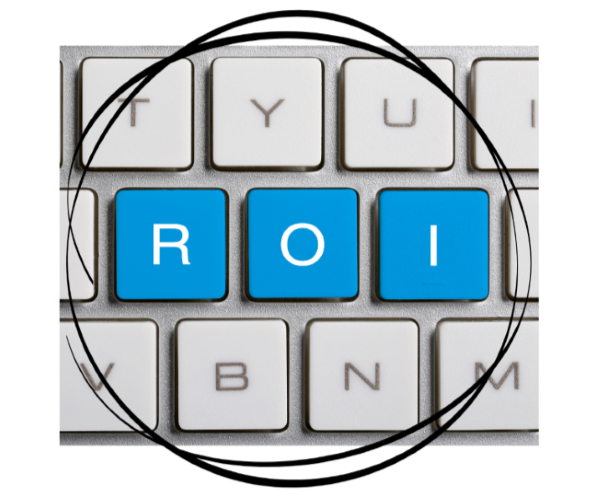
Our Process for Bringing Client Visions to Life
Steve Wilcox, CEO
In software development, a great idea is just the beginning. The real challenge lies in transforming that idea into a functional, impactful solution that not only meets business needs but also creates lasting value. At BlueTread, we’ve developed a refined process for bringing client visions to life—one that emphasizes collaboration, iteration, and a deep understanding of each client’s unique goals. By guiding clients from concept through execution, we ensure that every project is strategically aligned, technically sound, and primed for success. In this blog post, we outline the key stages of our process and share how our approach turns ideas into impactful solutions.

1. Discovery: Understanding the Vision and Defining Goals
The first stage in any successful project is discovery. This is where we work closely with our clients to understand their vision, identify their goals, and uncover the specific challenges and opportunities the project aims to address. Our discovery process goes beyond surface-level requirements; we delve deep into the business context, industry trends, target users, and long-term objectives to build a comprehensive picture of the project.
During this phase, we typically hold workshops and brainstorming sessions with key stakeholders. These discussions allow us to align expectations, prioritize features, and establish a shared vision. We also conduct thorough research, analyzing competitors, industry benchmarks, and user behaviors. This research helps us identify gaps in the market and potential areas for innovation, giving our clients a competitive edge.
Our goal in the discovery phase is to build a solid foundation for the project. By defining clear goals and identifying the core requirements upfront, we minimize risks and ensure that every decision we make throughout the process is aligned with the client’s strategic vision.
2. Planning: Creating a Roadmap and Strategy
Once we have a clear understanding of the project’s goals and requirements, we move into the planning phase. Here, we develop a detailed roadmap that outlines the project’s scope, timeline, milestones, and resources needed. This roadmap serves as a guide for both our team and the client, providing clarity on the steps required to bring the idea to life.
In this phase, we collaborate closely with clients to prioritize features and define the minimum viable product (MVP) if the project will launch in stages. Our agile approach allows us to adapt as we learn more throughout the development process, but we establish a strong plan and realistic timelines upfront to ensure we’re on track.
We also identify potential risks and create mitigation strategies. For instance, if we’re developing a product that relies on third-party integrations, we assess the compatibility of those systems and plan accordingly. By anticipating potential challenges, we’re able to navigate the process more effectively, ensuring smoother execution and fewer roadblocks.
3. Design: Turning Ideas into Tangible Experiences
The design phase is where the idea starts to take shape. Our design team begins by creating wireframes, sketches, and prototypes that outline the structure and flow of the application or product. These initial designs serve as a visual representation of the project, allowing stakeholders to see how users will interact with the product.
Throughout the design process, we emphasize user experience (UX) and usability. We conduct user research and usability testing to validate design choices and make adjustments based on real user feedback. By prioritizing the user journey, we create designs that are intuitive, user-friendly, and aligned with the client’s brand.
Design is an iterative process. We collaborate closely with clients, presenting design drafts, gathering feedback, and refining based on input. This collaborative approach ensures that the final design meets the client’s vision while incorporating best practices in user-centered design. The result is a product that’s not only visually appealing but also functionally effective and aligned with the user’s needs.
4. Development: Bringing the Vision to Life Through Code
With a clear design in place, we move to the development phase, where our engineering team brings the concept to life through code. We use an agile development approach, breaking down the project into sprints that allow us to develop, test, and refine the product in manageable stages.
Our developers work closely with designers and stakeholders throughout this phase to ensure that the project is progressing as planned. By using agile methodologies, we’re able to prioritize high-impact features, adapt to feedback quickly, and release new functionalities in a phased approach. Each sprint focuses on specific features, allowing us to test and validate our work continuously.
During development, we prioritize code quality, security, and scalability. Our engineers follow best practices for clean code and comprehensive testing to ensure that the product is reliable and performs well under different conditions. Additionally, we incorporate automated testing and continuous integration to streamline the development process and catch any issues early on.
The development phase is highly collaborative, with regular check-ins and demonstrations to keep the client informed. This transparency allows us to make adjustments as needed, ensuring that the final product aligns with the client’s evolving needs and goals.
5. Testing: Ensuring Quality and Performance
Testing is a critical step in our process, ensuring that the product not only meets the client’s requirements but also delivers a seamless, reliable experience for users. We perform a range of tests, from functional and performance testing to security and usability testing, to ensure that the product is ready for launch.
Our testing process includes:
- Functional Testing: Verifying that each feature works as intended and meets the requirements outlined in the roadmap.
- Performance Testing: Assessing how the product performs under different conditions, including high-traffic scenarios, to ensure stability and responsiveness.
- Security Testing: Identifying and addressing any vulnerabilities to protect sensitive data and ensure compliance with relevant regulations.
- User Acceptance Testing (UAT): Collaborating with clients and end-users to gather feedback and make final adjustments before launch.
Testing is an iterative process, and we address any issues that arise to ensure the product is as polished and dependable as possible. Our goal is to deliver a product that exceeds client expectations and provides a seamless experience for end-users.
6. Launch: Going Live and Making an Impact
Once testing is complete and the client is satisfied, we move to the launch phase. We work closely with the client to prepare for a smooth rollout, coordinating any final steps needed for deployment, including server setup, data migration, and user onboarding. We also provide documentation and training to ensure the client’s team is equipped to manage the product moving forward.
Launching a product is an exciting milestone, but it’s also a time for careful planning and coordination. We monitor the product closely during and after launch, addressing any unforeseen issues that may arise. Our team remains on hand to provide support, troubleshoot any issues, and ensure that users have a positive experience from day one.
7. Post-Launch Support and Continuous Improvement
Our commitment to our clients doesn’t end at launch. After the product is live, we provide ongoing support, maintenance, and updates to keep the solution performing at its best. In the fast-paced world of technology, user needs and industry standards evolve constantly, and we work with our clients to ensure their product remains relevant and competitive.
Through our optimization services, we continuously analyze performance metrics, user feedback, and industry trends to identify areas for improvement. This commitment to continuous improvement allows us to adapt the product over time, adding new features, enhancing functionality, and ensuring that it continues to create value for both the client and their users.
The Impact of Our Process
Our process for bringing client visions to life is designed to create impactful solutions that are not only technically robust but also aligned with strategic goals and user needs. By focusing on collaboration, iteration, and quality at every stage, we ensure that each project delivers maximum value and positions our clients for long-term success.
From the initial discovery phase through post-launch support, we’re committed to our clients’ success. Our approach transforms ideas into reality, creating technology solutions that make a tangible impact on businesses, customers, and industries. We believe that by investing in a thoughtful, end-to-end process, we can bring our clients’ visions to life in ways that exceed expectations and drive lasting change.






%201.png)







